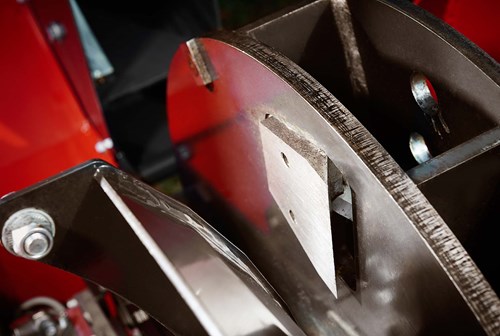TP TWIN DISC
TP TWIN DISC
The rotor disc in the wood chipper is exposed to enormous powers,
when the blades chip a solid log into uniform wood chips. The challenging
task is to design a rotor disc that has the requisite strength and stiffness
to chip wood without gettng so heavy that engine start-up becomes difficult.
The TP TWIN DISC in TP Wood Chippers are constructed as two discs that
are welded and connected to each other with a certain distance controlled by some distance plates. Some of the distance plates have also the function as blowing wings which lead the wood chips to the chute of the wood chipper. On the outside of one of the discs, the blades are mounted. The chips are cut off the trunk of tree and passing through holes in the disc. Due to the rotation of the disc the wood chips are blown out of the rotor housing.
The engineers of Linddana found their inspiration to TP TWIN DISC from Mother Nature, more specificly how bees build their home in a very sophisticated pattern of cells. When these cells are fitted together
in layers it creates a very strong construction
On this sketch, the construction is shown in a schematic way.
The two plates B are connected to each other by the pattern of
cells C. When these 3 parts are connected to each other it creates
the very strong and stiff sandwich construction A.
Same principle is used in the design of the TP TWIN DISC rotor.
Two discs are welded and connected to each other with a certain
distance controlled by some distance plates with the similar function
as the pattern C mentioned above.

The ground-breaking advantage of this construction is the lower
weight. If the disc rotor was made of a solid disc and should have
the same strength and stiffness as the TP TWIN DISC rotor, it
would be more than 40 percent heavier than the TP TWIN DISC rotor.
This is one of several reasons that TP wood chippers are
BIGGER, STRONGER and LIGHTER!



